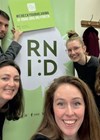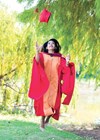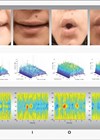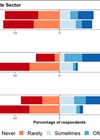Audiology features
Deaf identity is not cookie cutter shaped: a CI user in a hearing world
Sam Burgess tells us what deaf identity means to her as a service manager in a busy healthcare library, with a cochlear Implant. To begin with, I have been deaf since birth due to congenital rubella. I have not known...
The accidental audiologist
In this article we hear from Muhammed Ayas, an “accidental” audiologist applying his transferable skills as a clinician, academic, and researcher through trying and testing innovative approaches in audiology to better serve the community. My audiology journey began 22 years...
A path to leadership
In this article we learn more about the Ruth Thomsen’s journey in audiology and healthcare science, exploring the opportunities on the road less travelled. “Two roads diverged in a wood, and I—I took the one less traveled by,And that has...
From clinics to campaigns: my audiological career so far
In this article we hear about the Franki Oliver’s journey from clinical practice in audiology to the third sector. Hi! I’m Franki and I’m the audiology manager at the Royal National Institute for Deaf People (RNID), a charity supporting people...
Grasping opportunities and taking chances: an accidental journey to the perfect destination
Here, Jonathan Parsons tells us more about his journey from clinical audiologist to setting up a social enterprise in the National Health Service. My route to Exeter and to a social enterprise has had several twists and turns and not...
Going beyond patient care: discovering alternative roles in audiology
In this article we hear about Husmita Ratanjee-Vanmali’s journey from clinical practice to implementing global strategies for clinical practice, education, and innovation across South Africa, Canada and Denmark. In the constantly evolving dynamic global sector, have you ever considered what...
Towards AI-assisted RF hearing aids
The development of effective hearing-assistive devices is essential as the prevalence of deafness grows with an ageing population. Where can AI support speech understanding? A team from the University of Glasgow discusses how lip‑reading hearing aids could be the future....
Adult speech testing in the UK
What do hearing healthcare providers see as the benefits and barriers to delivering speech testing? This article explores the latest research. Why speech testing? Speech tests have been used across ENT and audiology practice to measure an individual’s speech recognition...
Using the Ling-Madell-Hewitt (LMH) Test Battery
Why change a classic? Because of new knowledge and improved technology, of course! Drs Hewitt and Madell present an update to Daniel Ling’s classic speech test. One of Daniel Ling’s legacies is the Ling Six Sound Test which presents six...
Introduction to speech testing
Let’s get back to basics: Dr Schoepflin introduces the concepts behind speech testing for hearing care professionals. While pure tone threshold testing is considered the ‘gold standard’ for assessing auditory sensitivity, the results of pure tone testing provide only limited...
The importance of s-ABR in auditory disorders
S-ABR is a method of recording speech-evoked-potentials, but where does it fit in the clinical and research test battery? Here, the authors examine the opportunities for s-ABR. The integrity of the neural transmission of acoustic stimuli is evaluated by auditory...
Platinum-based chemotherapy, tinnitus and hearing loss
Fortunately, the five-year survival rate of adult cancers is increasing. However, we are seeing for the first time the lasting effects of cancer treatments on people. As more people live with the long-term effects of treatment, such as chemotherapy, it is imperative to understand the impact it has on quality of life.

















